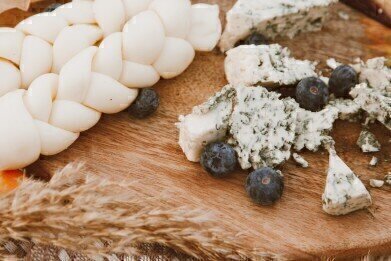GC, MDGC
Meet the Ant That Smells Like Blue Cheese!
Jun 29 2015
For those living in the United Kingdom or elsewhere in Europe, an ant with the pungent odour of blue cheese might sound like an unlikely phenomenon. However, those from the United States will more than likely be familiar with the spectacularly-scented insect Tapinoma sessile, a common house ant around the country.
On the other hand, they might be not quite so familiar with associating the ant with blue cheese. For the last half a century, Tapinoma sessile has been synonymous with rotten coconut rather than Roquefort… until recently.
Sailing Against the Wind
A postdoctoral researcher at North Carolina State University, Clint Penick, was interested when he heard tell of this rotten coconut-smelling critter. Having neither encountered putrid coconut nor the ant in his life, he was a little unsure of what to expect.
However, when he moved to North Carolina after finishing his graduate degree, where the ants are common, Penick had a chance to sniff one in the flesh… and found it much more akin to blue cheese than coconut. Keen to test whether he was smelling something others weren’t, or whether there was some problem with his olfactory receptors, Penick decided to delve further.
Firstly, he conducted his own experiment by transporting a specimen of the creature to an annual Bugfest convention at the Museum of Natural Sciences in North Carolina. After asking hundreds of attendees to sniff the insect and describe what it smelled like, blue cheese came out as the overwhelming victor.
Chromatography Gives Penick a Scientific Grounding
Not satisfied with his imperfect results, Penick decided to give his findings a scientific grounding. He contacted his friend Adrian Smith at the University of Illinois, a postdoc interested in the way insects communicate via chemical secretion.
To analyse the chemicals responsible for the scents associated with the ants, the cheese and the coconut, Smith placed each in a separate container along with a Solid Phase Microextraction fibre (SPME fibre) which would absorb the chemicals. These were then analysed using the technique of gas chromatography-mass spectrometry (GC-MS), which identifies the compositional makeup of a compound by breaking it down into its building-block parts. To learn more about GC-MS and its applications, check out this handy introduction on the subject.
The findings of the experiment revealed that both blue cheese and the T. sessile odours were caused by a group of chemicals called methyl ketones. The chemicals involved in producing coconut scents are not related at all. However, after adjusting the experiment slightly to include rotten coconut (Penick buried the coconut in his back garden for a week and allowed mould to accumulate), the Penicillin mould was found to react with the coconut to produce exactly the same methyl ketones.
Penick was keen to stress that this work into the origins of the blue cheese-smelling ant were not funded by taxpayer’s money – it was something he and Smith did in their own time for fun. However, this is not to say that the techniques involved are not used on a daily basis to further our knowledge in more important areas. For example, there have recently been significant advances in the applications of mass spectrometry to environmental matrix analysis, thus aiding our attempts to reduce pollution and prevent further preventable damage to the atmosphere.
Digital Edition
Chromatography Today - Buyers' Guide 2022
October 2023
In This Edition Modern & Practical Applications - Accelerating ADC Development with Mass Spectrometry - Implementing High-Resolution Ion Mobility into Peptide Mapping Workflows Chromatogr...
View all digital editions
Events
ACS National Meeting - Fall 2024
Aug 18 2024 Denver, CO, USA
Sep 04 2024 Chiba, Tokyo, Japan
Sep 04 2024 University of Warwick, Coventry, UK
Sep 10 2024 Rockville, MD, USA
Plastics Recycling World Expo Europe
Sep 11 2024 Brussels, Belgium














